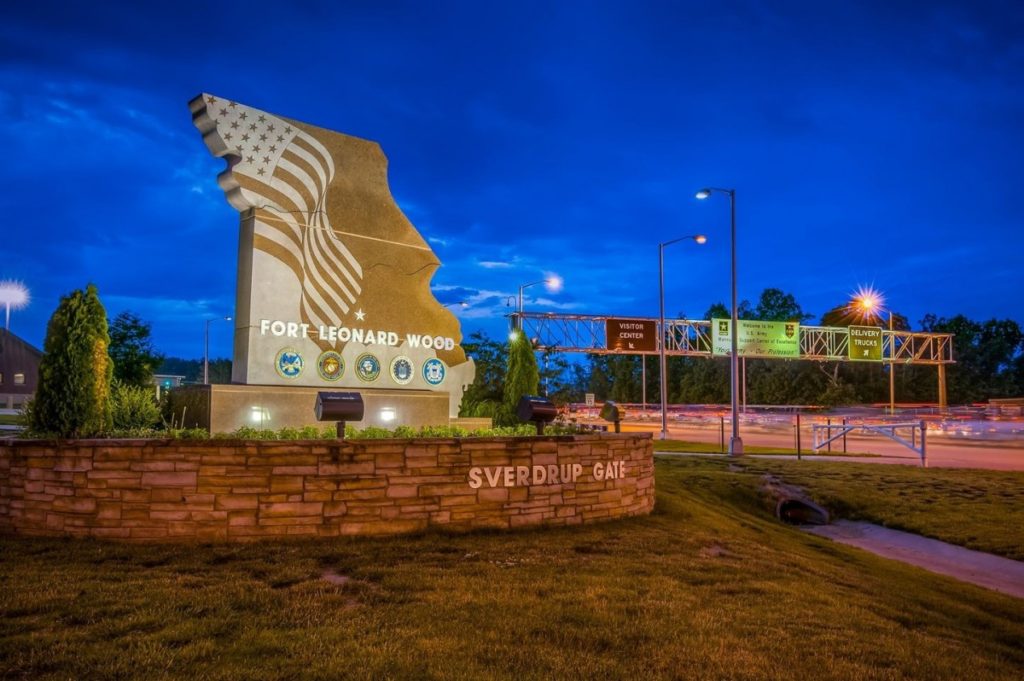
Archives for July 2017
Press Release: Tech Talk slated for Wednesday on post
Press Release 17-112 Tech Talk slated for Wednesday on post
Unmanned aircraft technology, autonomous vehicles and water security sound like topics straight out of a science fiction film, and on Wednesday, the Fort Leonard Wood community will have a chance to get a firsthand look at those technologies during Fort Leonard Wood’s first Tech Talk.
Beginning at 1 p.m. in Lincoln Hall Auditorium, Fort Leonard Wood’s Tech Talk will feature three, 20-minute presentations from industry and government experts.
Those experts will highlight “high-tech subjects that are of interest to the Army,” said Bryan Parker, Fort Leonard Wood Plans, Analysis and Integration Office director.
Photo: Staff Sgt. Ryan McCarthy – TRADOC NCO of the Year

Photo: Staff Sgt. Ryan McCarthy -TRADOC NCO of the Year

Press Release: Fort Leonard Wood Soldier claims TRADOC NCO of the Year title at Best Warrior Competition
Fort Leonard Wood’s Staff Sgt. Ryan McCarthy, 1st Engineer Brigade, claimed the 2017 Training and Doctrine Command’s Noncommissioned Officer of the Year title today.
The Belgrade, Maine native, competed against noncommissioned officers from across Army TRADOC installations in the Best Warrior Competition held at Fort Jackson, South Carolina.
Back to School Safety
The first day of school is right around the corner, and school days bring congestion. Yellow school buses are picking up their charges; kids on bikes are hurrying to get to school before the bell rings, and harried parents are trying to drop their kids off before work.
It’s never more important for drivers to slow down and pay attention than when kids are present – especially before and after school.
If You’re Dropping Off
Schools often have very specific drop-off procedures for the school year. Make sure you know them for the safety of all kids. More children are hit by cars near schools than at any other location, according to the National Safe Routes to School program. The following apply to all school zones:
- Don’t double park; it blocks visibility for other children and vehicles
- Don’t load or unload children across the street from the school
- Carpool to reduce the number of vehicles at the school
Sharing the Road with Young Pedestrians
According to research by the National Safety Council, most of the children who lose their lives in bus-related incidents are 4 to 7 years old, and they’re walking. They are hit by the bus, or by a motorist illegally passing a stopped bus. A few precautions go a long way toward keeping children safe:
- Don’t block the crosswalk when stopped at a red light or waiting to make a turn, forcing pedestrians to go around you; this could put them in the path of moving traffic
- In a school zone when flashers are blinking, stop and yield to pedestrians crossing the crosswalk or intersection
- Always stop for a school patrol officer or crossing guard holding up a stop sign
Take extra care to look out for children in school zones, near playgrounds and parks, and in all residential areas - Don’t honk or rev your engine to scare a pedestrian, even if you have the right of way
- Never pass a vehicle stopped for pedestrians
- Always use extreme caution to avoid striking pedestrians wherever they may be, no matter who has the right of way
Sharing the Road with School Buses
If you’re driving behind a bus, allow a greater following distance than if you were driving behind a car. It will give you more time to stop once the yellow lights start flashing. It is illegal in all 50 states to pass a school bus that is stopped to load or unload children.
- Never pass a bus from behind – or from either direction if you’re on an undivided road – if it is stopped to load or unload children
- If the yellow or red lights are flashing and the stop arm is extended, traffic must stop
- The area 10 feet around a school bus is the most dangerous for children; stop far enough back to allow them space to safely enter and exit the bus
- Be alert; children often are unpredictable, and they tend to ignore hazards and take risks
Sharing the Road with Bicyclists
On most roads, bicyclists have the same rights and responsibilities as vehicles, but bikes can be hard to see. Children riding bikes create special problems for drivers because usually they are not able to properly determine traffic conditions. The most common cause of collision is a driver turning left in front of a bicyclist.
- When passing a bicyclist, proceed in the same direction slowly, and leave 3 feet between your car and the cyclist
- When turning left and a bicyclist is approaching in the opposite direction, wait for the rider to pass
- If you’re turning right and a bicyclists is approaching from behind on the right, let the rider go through the intersection first, and always use your turn signals
- Watch for bike riders turning in front of you without looking or signaling; children especially have a tendency to do this
- Be extra vigilant in school zones and residential neighborhoods
- Watch for bikes coming from driveways or behind parked cars
- Check side mirrors before opening your door
By exercising a little extra care and caution, drivers and pedestrians can co-exist safely in school zones.
(Information provided by the National Safety Council.)


